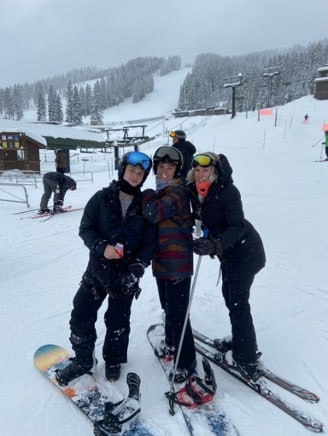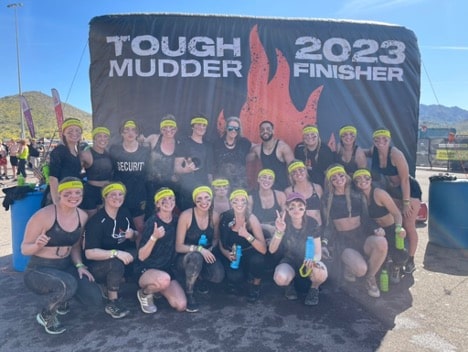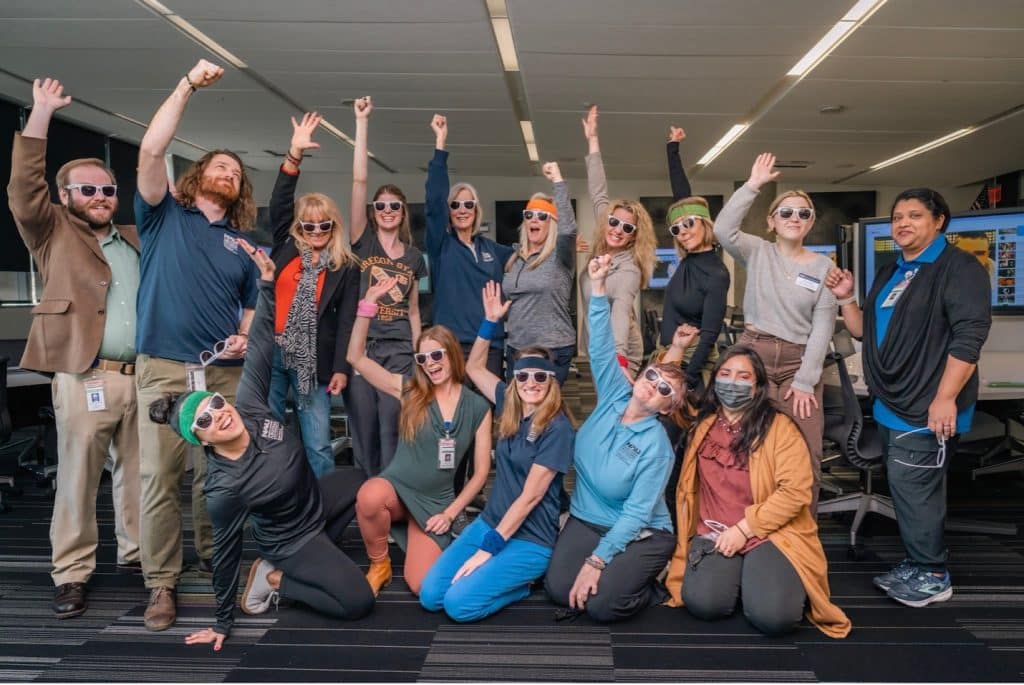When she was young, Amy Armstrong-Heimsoth wanted to be a drummer in a band, or maybe a child psychologist. She landed a little closer to the latter. Armstrong-Heimsoth, an assistant clinical professor and chair of the Department of Occupational Therapy at the Phoenix Bioscience Core, talks to The NAU Review about her research with youth aging out of the foster care system, how a sometimes hated childhood passion taught her important life lessons and what piece of advice she wants students to internalize.
What brought you to NAU?
I came to NAU OT to create the pediatric content thread for our department. I was thrilled with the opportunity to create unique learning opportunities throughout our many lifespan courses. It is near to my heart, having been a pediatric occupational therapist for the last 26 years.

Tell me about your research with youth aging out of the foster care system—how you got started, what you’re looking at right now and so on.
I began researching youth transitioning from foster care (YTC) through my connection with a community partner, Opportunity Community & Justice for Kids (OCJ Kids). They showed me the issues pervasive in Arizona, and I knew I had to get involved by bringing my skills to the table. I have conducted research and published papers over the last five years. Right now, I am seeking a grant to provide occupational therapy services to YTC through AHCCCS in order to show the benefit OT can provide and to create novel approaches to this chronic issue. I am also on a team with the Artist & Researcher program through UArizona, which seeks to broaden the audience of people who may see research by pairing artists to create a visual representation of the work. The opening will be in August.
Why is this kind of work important?
Youth aging out of foster care experience poor health and social outcomes. Twenty percent will become homeless immediately after transition; 50 percent will be unemployed at age 24; 50 percent will develop a substance dependence; 25 percent will be diagnosed with PTSD (post-traumatic stress disorder); 70 percent of women will become pregnant before age 21 (Courtney et al., 2007). They also have disparities in educational attainment, with only 46 percent of youth in foster care earning a high school diploma as compared to 85 percent of youth in the United States overall (NCES, 2020). Less than 3 percent of youth in foster care will obtain a bachelor’s degree compared to 36 percent of the U.S. overall adult population (U.S. Census Bureau, 2020). This is despite having multiple life skills and transition programs in place.
Tell me about a significant childhood memory and how it has impacted your life

today.
I grew up as a competitive ice skater. Early morning practice before school, when it was dark and cold was not my favorite part. My poor parents, with all the complaining! It taught me perseverance and grit—to stick to things even when people tell you no.
What did you want to be when you grew up?
I wanted to be a child psychologist or a drummer in a band!
What have you been most proud of recently?
In my personal life, my kids. They are 21, 19, 19 and 17. They are each becoming amazing adults and finding their own path. It is such a gift to watch.
In my professional life, our program. Going through reaccreditation and being awarded the maximum number of years. Watching our team pull together.
What is your favorite way to spend a day off?
Hiking, throwing the ball for the dogs and relaxing in our yard, chatting with the kids and cooking.

What are three things on your bucket list?
I’d like to take our whole family to Europe and spend some time traveling. I’d like to retire and return to service work in the community. I’d like to become a fellow of our national organization, AOTA. Complete a new physical challenge, which I haven’t yet named.
What’s your favorite piece of advice to give to students?
Think of your studying like a camera lens: it will require you to zoom in and zoom out to understand and put things in context. If you have a hard time zooming out and seeing the bigger picture, study with someone who is great at it. The opposite is true too.




